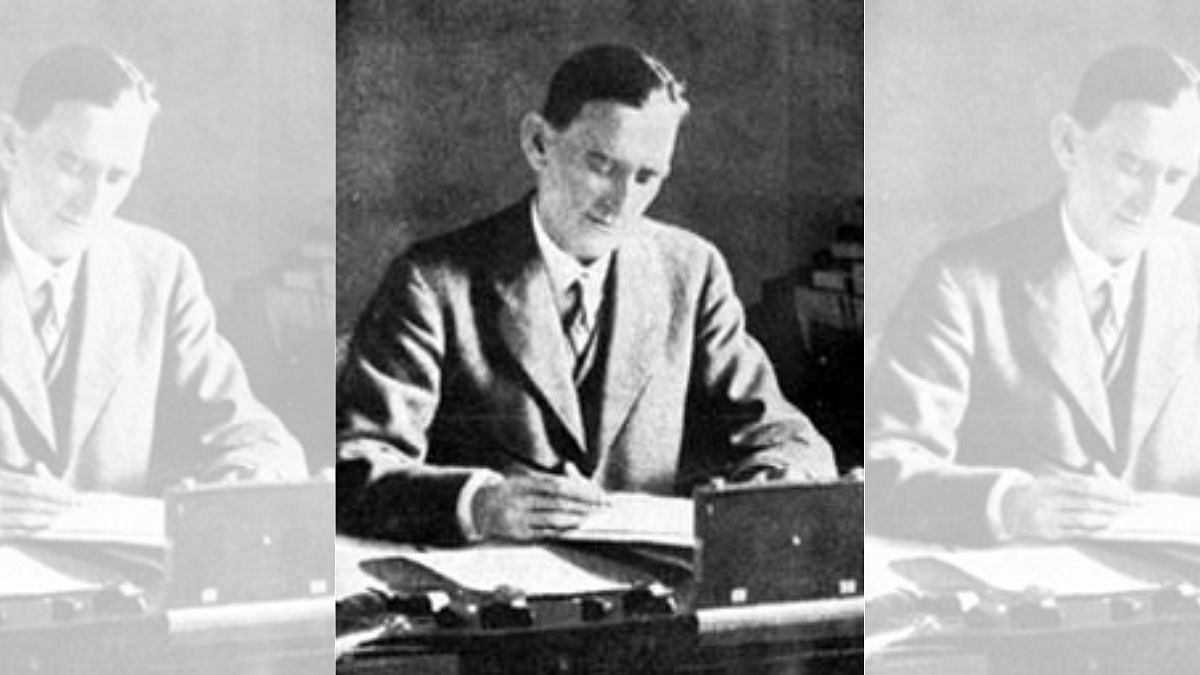Chennai: As part of the Dravida Munnetra Kazhagam’s ongoing push to highlight that the Indus Valley civilisation was pre-Aryan and that Dravidians were actually their precursors, Tamil Nadu Chief Minister M.K. Stalin invoked 20th century English archeologist John Marshall, who had established a connection between the civilisation and the Dravidian people.
Stalin reiterated his government’s commitment to building a life-size statue of the Marshall in Chennai.
This is not the first time Stalin has taken pride in the existence of the Dravidian race before the Aryans. Since coming to power in 2021, at every possible instance, Stalin has emphasised the need of rewriting the history of the Indian subcontinent from the Tamil perspective.
In a post on X Friday, Stalin wrote about the announcement by Marshall, who was the Director-General of Archeology between 1902 and 1928 under British rule, on 20 September, 1924 about the discovery of the Indus Valley civilisation.
Exactly 100 years ago, on 20th September 1924, Sir #JohnMarshall announced the discovery of the #IndusValleyCivilisation, reshaping the history of the Indian subcontinent. I look back with gratitude and say, “Thank you, John Marshall.”
By taking right cognisance of the material… pic.twitter.com/G3SpbQvf1x
— M.K.Stalin (@mkstalin) September 20, 2024
Sharing excerpts from the official account of the archaeological excavations at Mohenjo-Daro carried out between 1922-1927 by a team headed by Marshall, titled Mohenjo-Daro and The Indus Civilisation, Stalin recalled his government’s decision to mark the centenary of Marshall with an international conference, besides the statue.
“By taking right cognisance of the material culture of the IVC(Indus Valley Civilisation), he linked it to the #DravidianStock,” Stalin wrote.
According to the excerpts of the report shared by Stalin, “Dravidic-speaking people were the precursors of the Aryans over most of Northern India and were the only people likely to have been in possession of a culture as advanced as the Indus culture”.
“The Indus civilisation was pre-Aryan, and the Indus language or languages must have been pre-Aryan also. Possibly, one or other of them (if, as seems likely, there was more than one) was Dravidic,” Marshall’s account reads.
The Dravidian supremacist ideology of present-day DMK draws its roots from the Justice Party and Dravidian movement helmed by social reformer Periyar EV Ramasamy. The movements sought to dismantle the caste hierarchies and the Brahmin dominance in social and political life in Tamil Nadu. The Brahmins were often associated with the Aryan culture due to the historical narrative about the Aryan invasion.
Also read: HC strikes down reservation of TN panchayat post for Dalit women, president-elect vows to continue fight
Stalin’s aspiration of ‘rewriting history’
On 19 February, 2024, during the budget session, Tamil Nadu Finance Minister Thangam Thennarasu had announced the commemoration of the centenary celebration of John Marshall with a statue and a conference with international scholars.
This is not the first instance of the DMK government’s attempt to dignify Tamil Nadu’s role in history.
In September 2021, excited by the carbon dating analysis of rice found in a burial urn in Sivakalai in Tirunelveli district that yielded the date of 1155 BC, Stalin had said in the assembly that the findings had established that the Tamirabarani civilisation is 3,200 years old.
Later, in December 2022, speaking at the 81st Indian History Congress in Chennai, he had said that the archaeological excavations at Keeladi proving the existence of urban settlements in the state at least 2,600 years ago merits the rewriting of the history of the Indian Subcontinent.
He pointed out how the artefacts recovered from the Keeladi excavation site established that literacy existed among the people in 600 BCE on the shores of the Vaigai river in present-day Madurai in the southern part of the state.
“DMK government is working to reclaim the past glory of Tamils,” he had said then.
In July last year, speaking at the 36th convention of the Federation of Tamil Sangams of North America, he had reiterated that rewriting of the Indian subcontinent’s history should begin from Tamil Nadu.
However, contrary to DMK’s belief that Dravidians are the true “sons of the soil”, John Marshall’s report had revealed that even the Dravidian race had entered India through Baluchistan.
One of the reasons to believe that the civilisation was pre-Aryan was that the Dravidian race came via Baluchistan, according to an article by Marshall published in The Illustrated London News on 20 September, 1924.
“Painted pottery and other objects somewhat analogous to those from Mohenjo-Daro and Harappa have been found in Baluchistan; and there are linguistic reasons for believing that it was by way of Baluchistan that the Dravidian races (thought by some writers to have been originally connected with the Mediterranean) entered India,” Marshall had written.
Archaeological excavations are underway at several places in Tamil Nadu, including Gangaikonda Cholapuram in Ariyalur district, Sivakalai and Thulukkarpatti in Tirunelveli district, and Vembakotai in Virudhunagar district.
(Edited by Mannat Chugh)
Also read: Gandhi wore dhoti to connect with TN’s poor. Now, his namesake revives handlooms. Similarities end there

